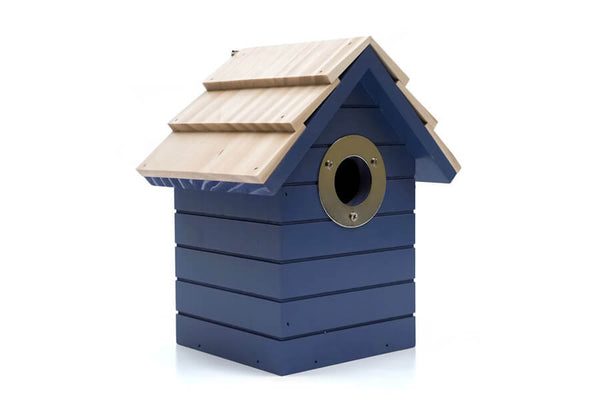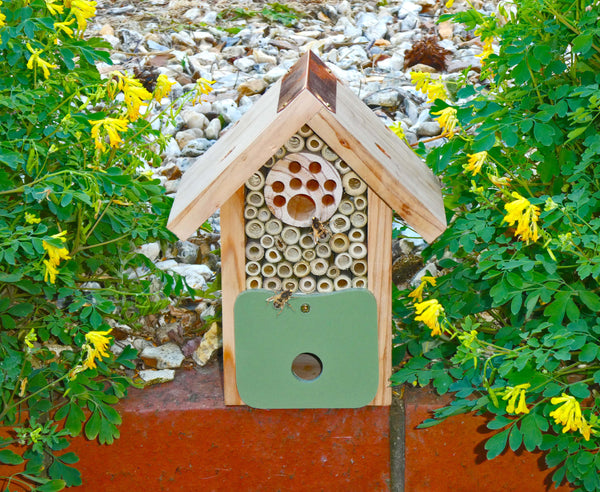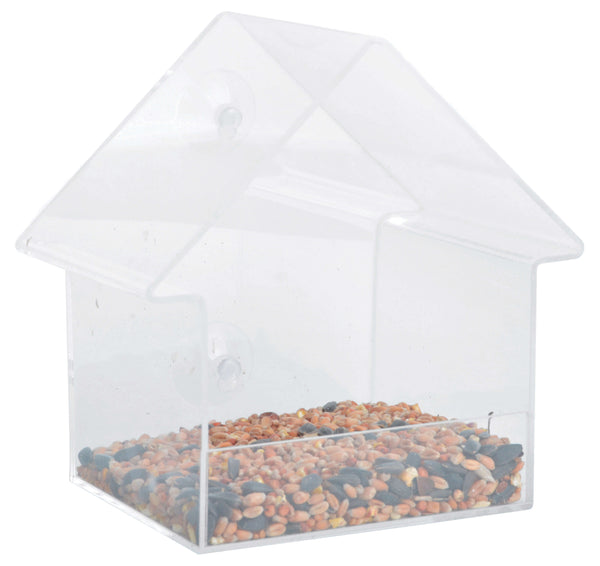Spring Into Action: Preparing Your Outdoor Space for Spring Wildlife
Spring is on the horizon, and with longer and warmer days at the tips of our fingers, it’s time to get your gardening gloves on and get your garden ready for all of the garden wildlife that will be roaming around in a few weeks.
In the wild, spring is the time of the year where bats and hedgehogs come out from their hibernation, many birds preparing for breeding season, and, arguably the cutest time of the year, lambs (and other animals too.) are born.
There’s a lot we can do to get our garden prepped for all of the local wildlife that is about to emerge, and help to attract wildlife to our gardens, and we’ve got some of our top tips to help you spring into action and prepare for the warmer months.
Spring Cleaning for Wildlife

Over the winter months, things can start to pile up in the garden and it can end up getting a little bit messy. To prepare your garden for spring and to allow it to be used to its full potential by wildlife - spend some time tidying your outside space.
Start by simply removing any debris, such as fallen leaves and branches, which may have piled over the winter.
Be sure to check for old nests in trees or nest boxes that are no longer in use. While it's important to respect active nests, removing unused ones creates space for new nesting sites in the spring.
Trimming back bushes and other vegetation is essential to maintain a neat appearance and encourage healthy growth.
Don't forget to inspect and clean water sources, such as bird baths in your garden. Clean, fresh water is vital for wildlife, especially during the spring when natural sources may be scarce.
A spring clean will help to promote new growth and reduce the risk of any diseases or pests that are harbouring in the debris from spreading - creating a safe and welcoming habitat for birds, insects and small mammals to fully enjoy.
Creating Habitats

With the number of natural wildlife habitats decreasing, our gardens can become lifelines for many small animals and other insects - so if you can, create a space that includes habitats that certain animals live in and supports these garden visitors during early spring.
By allowing as much wildlife to thrive in your garden as possible, you are promoting biodiversity, supporting wildlife, and contributing to a healthier environment, whilst also being able to watch these animals from your back window. (A win win if you ask us!)
If you are a keen gardener and love watching the flower you plant grow, you’ll know how important pollinators are to your plants. So having a habitat that invites these insects in is a great way to get the colour back in your garden!
There are some simple ways to create habitats for wildlife in a small space of your garden too, including:
< Installing bird boxes to provide nesting sites for birds. Different species prefer different types of bird boxes, so research which nesting birds are common in your area and find one they are likely to use. When you have a bird nesting box, it's also important to install some bird feeders and hanging bird tables as well so that the nesting birds have a reliable food source all year round!
< Plant flowers that attract insects and butterflies and provide food for caterpillars. Include a variety of nectar rich flowering plants and flowers to support the entire life cycle of butterflies and create a wildlife friendly garden this spring. If you're inviting the ladybirds and other insects into your garden, it's only polite to offer them an Insect Hotel where they'll be safe to hibernate and nest.
< A bat box will provide a roosting site for bats - these mammals are important for insect control and pollination, making them valuable allies in our gardens.
< Create a water feature such as a small pond such as a wildlife pond, or bird bath to provide drinking and bathing opportunities for many species of birds. Be sure to include shallow areas for smaller animals to access the water safely.
Plant for Pollinators

When the warm weather comes along, so does the low humming of the solitary bees and many insects and other pollinators - and even though we may not always love these insects, they make a big difference in our ecosystem and food production so it is important to attract beneficial insects to our outdoor spaces!
As the weather warms up in spring, many plants begin to bloom and produce flowers. These flowers rely on pollinators to transfer pollen between them, enabling fertilisation and the production of seeds or fruit. Bees and butterflies are among the most important pollinators during this time, visiting flowers to collect nectar and inadvertently transferring pollen as they move from flower to flower.
Beyond crop pollination, bees and butterflies and other pollinators also contribute to the overall biodiversity of ecosystems by pollinating wildflowers and native plants. This supports a healthy ecosystem by providing food and habitat for other wildlife and promoting the survival of a diverse range of plant species.
Pollinators are attracted to wildflowers, and luckily for us, these are easy to grow and maintain. Just throw some seeds in a patch in your garden (it doesn’t have to be a massive patch!) and you’ll be providing a valuable habitat for these pollinators to thrive. Try and choose native species where possible!
Sustainable Gardening Practices
To help promote biodiversity and minimise our impact on the planet, it is important for us to garden in the most sustainable way possible.
Sustainable gardening practices help to protect our natural materials like water and soil as these practices don’t use any chemicals. These healthy ecosystems are much more resilient to changes!
To practise sustainable gardening, consider incorporating the following techniques into your gardening routine:
< Use organic fertilisers such as compost, compost tea, or natural amendments like bone meal or fish emulsion. These products provide essential nutrients to plants without introducing harmful chemicals into the soil or water supply.
< Minimise or eliminate the use of synthetic pesticides in your garden. Instead, employ integrated pest management (IPM) techniques such as companion planting, attracting beneficial insects, and hand-picking pests when possible.
< Compost kitchen scraps, yard waste, and other organic materials to create nutrient rich soil amendments for your garden. Composting reduces waste sent to landfills and improves soil health and structure so make sure you have a compost heap!
< Practise water saving gardening techniques such as mulching, drip irrigation, and collecting rainwater. These methods reduce water waste and promote healthier plant growth by delivering water directly to the root zone.










